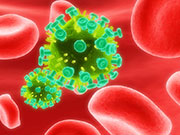Products that do not require daily use may be more suitable for some women
THURSDAY, Feb. 5, 2015 (HealthDay News) — In a population of predominantly young, unmarried women in sub-Saharan Africa, daily adherence to oral or vaginal tenofovir-based formulations was low, and no regimen significantly reduced the risk of HIV-1 acquisition. The study was published in the Feb. 5 issue of the New England Journal of Medicine.
Jeanne M. Marrazzo, M.D., from the University of Washington in Seattle, and colleagues conducted a randomized controlled trial to examine daily treatment with oral tenofovir disoproxil fumarate (TDF), oral tenofovir-emtricitabine (TDF-FTC), or 1 percent tenofovir (TFV) vaginal gel for pre-exposure prophylaxis against HIV-1 infection. Study participants included 5,029 women in South Africa, Uganda, and Zimbabwe. During 5,509 person-years of follow-up, the rate of retention in the study was 91 percent.
The researchers noted 312 HIV-1 infections, with an incidence of HIV-1 infection of 5.7 per 100 person-years. In the modified intention-to-treat analysis, the hazard ratios for infection were 1.49 (95 percent confidence interval [CI], 0.97 to 2.29) for TDF, 1.04 (95 percent CI, 0.73 to 1.49) for TDF-FTC, and 0.85 (95 percent CI, 0.61 to 1.21) for TFV gel. The researchers detected TFV in 30, 29, and 25 percent of plasma samples from participants randomized to TDF, TDF-FTC, and TFV gel, respectively. There was a negative correlation between detection of TFV in plasma and characteristics predictive of HIV-1 acquisition.
“None of the drug regimens we evaluated reduced the rates of HIV-1 acquisition in an intention-to-treat analysis,” the authors write. “Adherence to study drugs was low.”
Two authors disclosed financial ties to Gilead Sciences; one author disclosed pending patents related to the use of tenofovir for prevention of genital herpes simplex virus infection.
Copyright © 2015 HealthDay. All rights reserved.








